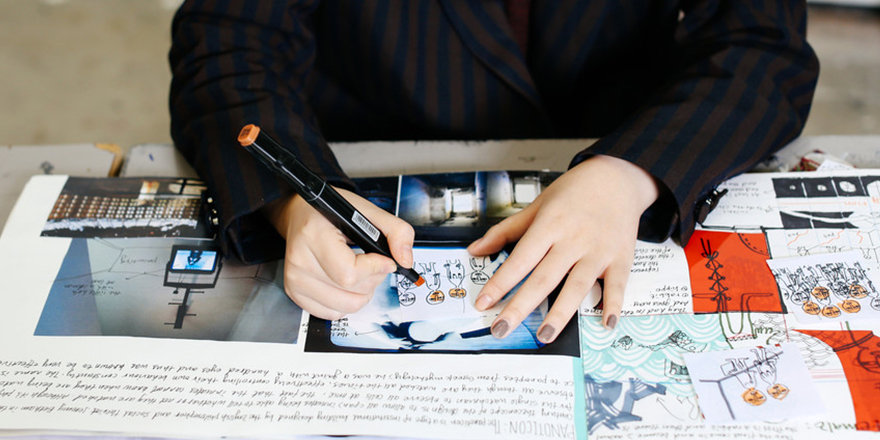Top Six Tips on Creating a Stand-Out Portfolio
Show off your personality, balance process and perfection, and be decisive, to make a portfolio that will wow your audience.


If you're thinking about applying to a creative art and design program, whether in fine art, graphic design, fashion design, or another hands-on discipline, you'll probably have to present a portfolio as part of your application.
Your portfolio is a window into your world through which we can see your skills, personality and potential. It's a collection of work that represents how you've developed your practice over time.
When you're preparing your portfolio you'll likely have a lot of questions. What to include? How to present it? What should it look like? To help you prepare, we've gathered some portfolio advice from across our community at University of the Arts London (UAL).
Personality is Paramount
A portfolio should tell us who you are. It's all about storytelling. As creatives you put a lot of yourselves into your work, so you have to be willing to showcase this in your portfolio. We want to see who you are as an artist, a designer, a maker. The more we can learn about you from your portfolio, the easier it is for us to know if you're right for one of our courses.
Consider Your Audience
Always think of the person who's looking at your work and make it as easy as possible for them to read it and understand it. Instead of chronological order, we advise a strong narrative. Compare it to a piece of music or a good book: an impactful beginning, interesting middle and a punchy end.
As selection criteria can vary by university, and even by course, remember to read all of the application information available for your chosen course while preparing your portfolio.
Balance Process and Perfection
Don't be embarrassed by imperfect drawings or unfinished plans; it's all part of your process, and helps us understand your ability to ideate. We always like to see how you progress from inspiration and research to development and final outcome.
Show Us What You Love
We want to know what you're passionate about and how it influences your work. You may really excel at a certain technique, but show some variety. Endeavour to keep the work on topic without it becoming repetitive. Show us your range, keep our attention.
Don't hold back on including group work. Collaboration is an important element in many creative practices — just remember to include the role you played.
Be Decisive
While we love to see a variety of work within your portfolio, we do want to see your ability to edit. It's all about establishing a balance. If you have lots of drawings, show us a few of your favourites. If you're including film, edit it down and include stills to be efficient.
Think About Format
When formatting, opt for what best suits the creative area you're working in. Ensure your work has room to breathe, is all the same orientation and can speak for itself. Consider practicality too — is a bulky folder going to hinder you on transit? Tailor the format of your portfolio to suit the situation. If the course is asking for a digital portfolio, that doesn't mean all of your work needs to be digital. Think about what you would put into your physical portfolio and photograph that.
Find more portfolio advice from UAL staff and students on our website, which includes a new series of videos covering everything you need to know about preparing a portfolio for UAL. We also have downloadable guides for 'preparing a portfolio' and, for when you've progressed to the interview stage of your application, 'interviewing with a portfolio.'
